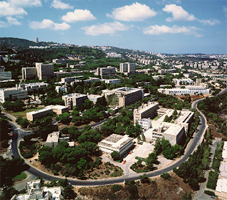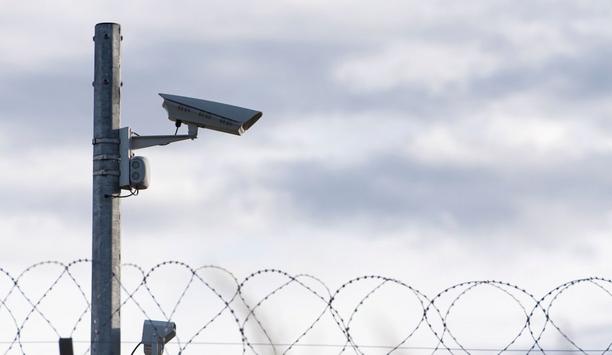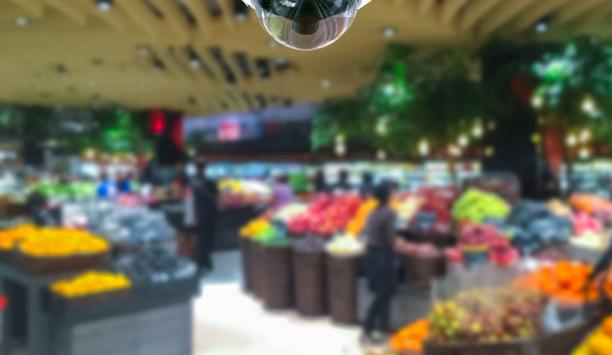 Technion University's school security program uses ioimage intelligent-video for protection from attacks and more
Technion University's school security program uses ioimage intelligent-video for protection from attacks and more
The Technion Israel Institute of Technology is the oldest university in Israel. Founded 1924 the university campus is located in Haifa's Neve Sha'anan neighbourhood on Mount Carmel.
This post secondary school encompasses 1,325,000 square meters, which includes approximately 85 buildings.
The university's landscape and terrain presents several security challenges. The security perimeter of the campus passes through areas of rocky steep terrain, foliage and wooded areas that make it difficult to access, monitor, and patrol. The campus is encircled by fencing and adjoined by residential dwellings, as well as roads, private driveways and parking lots. Security personnel are stationed at operating gates and provide access control, baggage checking, threat mitigation, and security assistance to the visitors, teachers, and students.
Security works hand in hand with loss prevention in addressing several issues. Beyond public safety and defending against terrorist attacks, there is a high priority placed on risk mitigation for insurance and liability issues.
"It's not uncommon for some students to take unnecessary safety risks which can quickly become a liability to the school. This can be student mischief, taking a shortcut through rugged terrain or clamouring over a security fence," said Amos Kessler, Technion's Commanding Security Officer. "In fact, it was common practice for students to jump over the fence instead of walking around to one of the checkpoints."
Additional priorities are the prevention of theft of intellectual and physical property as well as preventing vandalism and graffiti.
Vast security issues
The threat of school attacks, such as suicide bombers, school shooters, sniper attacks, terrorist rocket attacks, and hostage taking are some of the potential challenges for schools in Israel.
Technion security was looking to eliminate perimeter security holes and to create better situational awareness beyond existing security measures.
In the first phase of security enhancements, 25 cameras were added. With this expansion, Technion realised it would generate massive amounts of video all requiring someone to watch the live video 24/7. This raised concerns when considering the known drawbacks of human observation. Technion realised they needed a better solution. After looking at the technology offered on the market, Technion found that the promise of intelligent video to automatically watch and detect threats, helped eliminate sizable staffing needs for arrays of video banks.
Technion then compared intelligent video technologies on the market and chose ioimage technology over other systems. "The structure of the system is simple and combines small reliable units rather than PCs. It was also rated better for its consistent detection capabilities," said Amos. "After going online, within moments a student was caught by the system jumping over the fence."
This ability to have unblinking security around the perimeter allows Technion to document students' fence jumping antics for defense in injury claims that might arise. It also prevents infiltration by terrorists, trespassers, vandals, and thieves.
In addition, the system allows Technion to operate surveillance more cost effectively without tying up security guards to the task of incessantly watching video.
No one put in jeopardy
The system allows for remote detection and analysis of security situations. This was of significant importance in maintaining safety during a katusha rocket barrage on the city of Haifa in 2006.
"When the terrorists launched attacks that hit our campus we had already evacuated everyone to safety. We didn't need to place anyone in jeopardy where we could not guarantee scene safety," said Amos. "We had the tactical advantage of observing and being informed of everything while bunkered safely in the remote security control centre. When the missile explosion and subsequent damage occurred, it was detected and analysed. Luckily, no emergency response was needed."
Before the ioimage system was installed, Technion had experienced a number of thefts. "We had several instances of computer theft. Our investigations led us to determine that the thieves often carried computers over the security fence to waiting parked vehicles." said Amos.
"The system has been a real crime deterrent. Everyone knew about it. We intentionally allowed a high profile on the security upgrades and after installation we saw a sharp decline in the number of thefts on campus."
 The system allows security to know when someone approaches and crosses the perimeter fence even in difficult to patrol areas. If a car parks along a fence, security can be notified. In addition, thieves are instantly detected approaching the fence, sending notifications and alarm video to the security guards, preventing losses.
The system allows security to know when someone approaches and crosses the perimeter fence even in difficult to patrol areas. If a car parks along a fence, security can be notified. In addition, thieves are instantly detected approaching the fence, sending notifications and alarm video to the security guards, preventing losses.
"The system has raised the level of accountability for security guards who now must handle each alarm." Said Amos. "In addition, we can effectively monitor checkpoints and assure package inspection and access control procedures are being followed."
Because the system can identify movements, parked cars, removed items and automatically pan, tilt, and zoom to track items of interest, it allows security to gather information essential for interdiction and proactive school security.
Flexible system
Scheduling allows security to switch detection to coincide with behaviours that are out of the ordinary. Such as persons or vehicles entering into unusual areas or at unusual times, packages left behind, vehicles standing-by, removed items, etc. This can be used to draw attention to behaviours that often indicate preplanning or the beginning of a crime or attack.
Technion has plans to continue to expand the current ioimage intelligent video system to hundreds of cameras.
Technion needed a solution that allowed for future expansion. With the ioimage system, they achieved a truly scalable solution, the ideal architecture for robust operation, easy installation and use, as well as high-performance detection and security automation that watches the video and initiates responses.
All of this combined, provides high-security that fits within the school's tight security budget. It has allowed Technion to provide better protection and peace of mind for the students, teachers and visitors coming to the facility everyday.
















